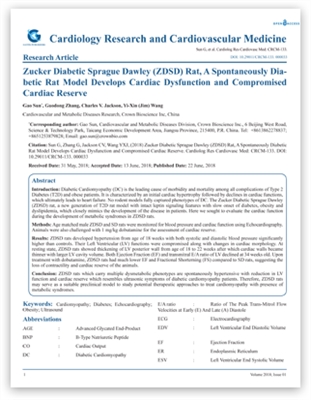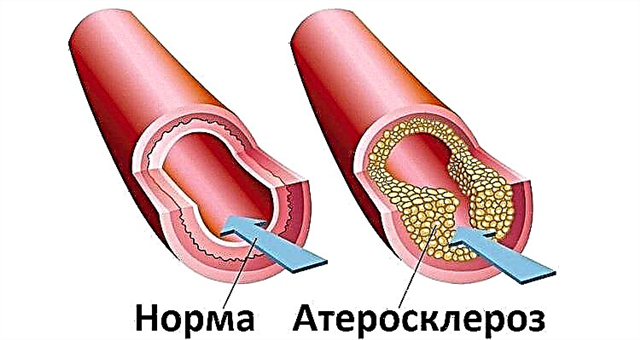The causes of nosebleeds in children can be very different, from banal overwork (overexertion) to strong blows to the nose. In some cases, a number of rather dangerous ailments and pathologies can become the root cause of bleeding. In this case, we are talking about low blood clotting, hypertension, hepatic, renal failure, and so on. In fact, there are many reasons. But before you find out why a child is bleeding from the nose, it makes sense to familiarize yourself with the characteristic symptoms of bleeding.
Symptoms
It is worth noting right away that babies (2 years old, 4 years old or 5 years old) will have a slightly different bleeding characteristic than slightly older children. Depending on the anatomical features of the nasal cavity, blood can flow from the nose both immediately and after the onset of itching in the nose, headache,  dizziness and other things. The most common symptom is external bleeding when a child has nosebleeds. In some cases, this process can be hidden. Then the blood will flow into the oropharynx.
dizziness and other things. The most common symptom is external bleeding when a child has nosebleeds. In some cases, this process can be hidden. Then the blood will flow into the oropharynx.
Children 9, 11, 12 years old and a little younger will have the following characteristic signs of bleeding:
- dizziness (especially for impressionable babies);
- uncharacteristic tinnitus;
- pallor of the skin;
- cardiopalmus;
- general fatigue in the body and so on.
Bleeding from the nose can manifest itself in varying degrees of severity. Take the average degree, for example. In this case, the flow of blood from one nostril (or from both), as a rule, is accompanied by a decrease in blood pressure and severe dizziness. In young children 5 years old and younger, blue discoloration of the facial skin can often be observed.
Epistaxis in children, the causes of which are not known for certain, can be intense. Even an adult in this case, in addition to severe discomfort, often experiences hemorrhagic shock (to say nothing of babies).
In addition to the general symptoms, lethargy and a decrease in blood pressure are added. If the blood from the nose in children is abundant, then there is a high probability of loss of consciousness.
Causes of bleeding in infants
As mentioned above, the characteristic features of bleeding (as well as its causes) at different ages will differ from each other. A baby or infant may experience bleeding more than once. In most cases, it is caused by excessive dryness of the indoor air, when parents neglect to control the air level.
Fearing that the newborn baby does not catch a cold, they do not ventilate the room and additionally install portable heating devices in it. How  As a result, excessively dry air irritates the delicate and not yet fully strengthened nasal mucosa and leads to bleeding. What should not be allowed is excessive dryness of the air. It is she who can cause the destruction of blood vessels in the nose, lead to a strong cough and other mild, but unpleasant consequences.
As a result, excessively dry air irritates the delicate and not yet fully strengthened nasal mucosa and leads to bleeding. What should not be allowed is excessive dryness of the air. It is she who can cause the destruction of blood vessels in the nose, lead to a strong cough and other mild, but unpleasant consequences.
If there is a nosebleed every day, then you should be alert and consult a doctor. He will prescribe a diagnostic examination to identify:
- hemophilia;
- low blood clotting;
- pathologies of the vascular system;
- neoplasms in the nasal cavity and so on.
Do not rinse and clean your nose too often in children under 3 years of age (this is especially true for young and inexperienced parents). Otherwise, you can damage the mucous membrane or cause inflammation.
Completely exclude cotton swabs and sticks, they are prohibited to use. Do not forget that frequent cleaning can lead to dryness of the nasal cavity and, as a result, to bleeding.
In what cases does nosebleed in children from 2 to 10 years old?
It is this age that is the most risky. The causes of nosebleeds should be sought in the high physical activity of children. In addition, nosebleeds in children can occur for the following reasons:
- Various household injuries. Coordination of movements is not well developed, therefore, there are often cases of bruises and blows to the nasal region.
 Overheating is another common cause of nosebleeds (usually in children under 10-11 years of age). Excessive exposure to the scorching sun rays (especially if there is no headgear) can lead to sunstroke. And he is mostly accompanied by nosebleeds. Concomitant symptoms are lethargy, weakness, lack of appetite, nausea, and even vomiting.
Overheating is another common cause of nosebleeds (usually in children under 10-11 years of age). Excessive exposure to the scorching sun rays (especially if there is no headgear) can lead to sunstroke. And he is mostly accompanied by nosebleeds. Concomitant symptoms are lethargy, weakness, lack of appetite, nausea, and even vomiting.- Quite often, a child has nosebleeds due to a sharp drop in pressure. Such bleeding most often occurs in the afternoon and immediately before bedtime, accompanied by severe discomfort and crying.
- A foreign object in the nasal cavity can cause nosebleeds in children. Small children are always inquisitive, they learn a new unknown world every day. Therefore, do not be surprised that they put foreign objects in the nose (this is one of the research options). As a result, blood may flow.
- If a child is diagnosed with hypertension (that is, a periodic increase in blood pressure), he is at risk. In this case, even minor physical activity or prolonged exposure to the open sun can provoke profuse bleeding. There are a number of severe cases when hypertension is combined with other pathologies of the heart, kidneys or liver. Then the flow of blood from the nose is complemented by symptoms such as swelling, fatigue, shortness of breath.
- Children 5, 6 and 7 years old can be diagnosed with chronic pathologies in the form of sinusitis, runny nose or sinusitis. Permanent inflammation of the blood vessels in the nose leads to excessive fragility. The mucous membrane of the nose becomes loose. As a result, periodic bleeding appears. In addition, it is worth remembering that constant inflammation is fraught with curvature of the nasal septum and the formation of polyps or papillomas in the nose.
- There are various causes of nosebleed in a child. However, more and more cases are encountered when bleeding occurs due to the abuse of drugs that constrict blood vessels. Frequent use of "Nazol", "Glazolin", "Nazolin" and other similar drugs entails drying of the mucous membrane and the fragility of blood vessels. This results in recurrent nosebleeds.
Teenage years
If bleeding in children 6 years of age and younger, as a rule, is caused by dry air, then in adolescents the situation looks somewhat different. In this age  active hormonal changes begin. It is the rapid development of the body that often causes the appearance of blood from the nose. The key reasons at this age are as follows:
active hormonal changes begin. It is the rapid development of the body that often causes the appearance of blood from the nose. The key reasons at this age are as follows:
- Hormonal changes in children who are twelve or more years old may be accompanied by profuse nosebleeds. Most often girls suffer from them. Blood from the nose appears several times a week. Its main reason (in girls) is an increase in the amount of female hormones in the body. It is not worth worrying, the bleeding subsides as the hormonal background normalizes.
- In some cases, blood vessels do not keep pace with the increased growth and development of the whole body. They become thinner, become more fragile, and the nasal cavity at the same time acquires some friability. In addition, bleeding is often accompanied by joint problems.
- Blood from a child's nose - the reasons may be associated with vegetative vascular dystonia.We are talking about malfunctions of the sympathetic as well as parasympathetic systems. Most often, this pathology occurs during active puberty. In addition to nosebleeds, adolescents suffer from frequent headaches, intense sweating, general weakness, and increased heart rate.
Urgent care
If you have a one-year-old toddler or child 6, 10 years old or more, and you find he has nosebleeds, do not panic. Just follow these simple guidelines.
- Take it easy on your own and calm your baby, because excessive excitement and anxiety can further increase the bleeding.
 Adults often panic and make the mistake of throwing their head back. You should not do this, just sit the baby on a chair (or on your knees) and tilt his head forward a little. Thus, the blood will flow down unhindered, without penetrating the esophagus and respiratory tract. In this case, the use of cotton swabs is allowed.
Adults often panic and make the mistake of throwing their head back. You should not do this, just sit the baby on a chair (or on your knees) and tilt his head forward a little. Thus, the blood will flow down unhindered, without penetrating the esophagus and respiratory tract. In this case, the use of cotton swabs is allowed.- We advise you to check immediately for the presence / absence of foreign objects in the nose. If any are found, doctors do not recommend self-extracting them. It is best to call an ambulance. Otherwise, you can even more damage the blood vessels and increase bleeding.
- Nosebleeds can come at the most inopportune moment, so always have a handkerchief on hand. It should be soaked in cold water and applied to the bridge of the nose. Although it is best to use a cold compress in the form of ice wrapped in a cloth. Do not look that it is December outside the window and it is cold - your baby will not catch a cold. But you can reduce the intensity of bleeding and eliminate possible swelling.
- As noted above, the use of cotton-gauze tampons is allowed. Immediately before tamponation (the procedure for inserting a tampon into the nose), soak them in a solution of hydrogen peroxide.
It is best to prepare in advance for such problems and collect a first aid kit with the necessary means to stop the blood. To do this, consult your doctor. And most importantly - do not panic, because nosebleeds are not fatal.

 Overheating is another common cause of nosebleeds (usually in children under 10-11 years of age). Excessive exposure to the scorching sun rays (especially if there is no headgear) can lead to sunstroke. And he is mostly accompanied by nosebleeds. Concomitant symptoms are lethargy, weakness, lack of appetite, nausea, and even vomiting.
Overheating is another common cause of nosebleeds (usually in children under 10-11 years of age). Excessive exposure to the scorching sun rays (especially if there is no headgear) can lead to sunstroke. And he is mostly accompanied by nosebleeds. Concomitant symptoms are lethargy, weakness, lack of appetite, nausea, and even vomiting. Adults often panic and make the mistake of throwing their head back. You should not do this, just sit the baby on a chair (or on your knees) and tilt his head forward a little. Thus, the blood will flow down unhindered, without penetrating the esophagus and respiratory tract. In this case, the use of cotton swabs is allowed.
Adults often panic and make the mistake of throwing their head back. You should not do this, just sit the baby on a chair (or on your knees) and tilt his head forward a little. Thus, the blood will flow down unhindered, without penetrating the esophagus and respiratory tract. In this case, the use of cotton swabs is allowed.

